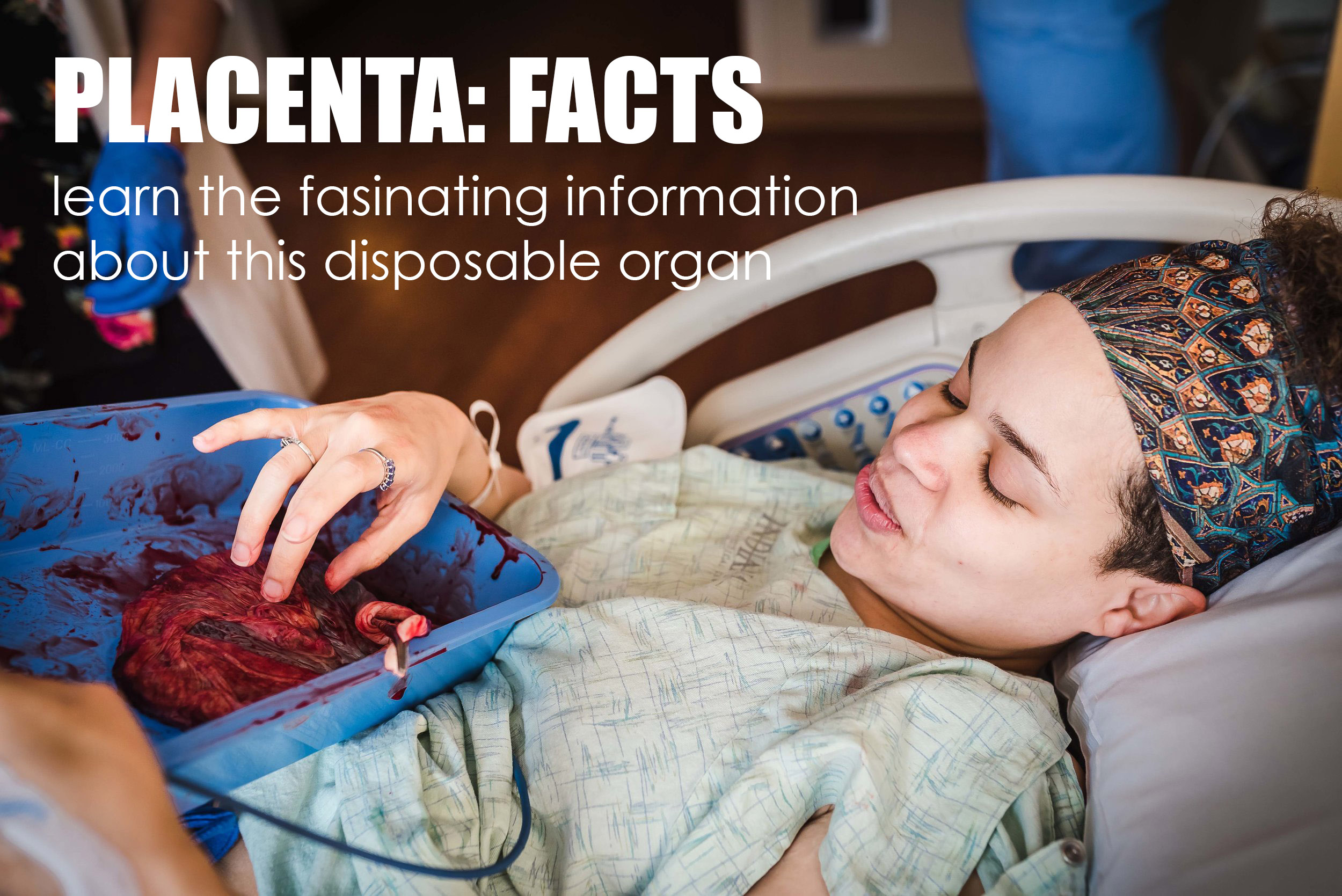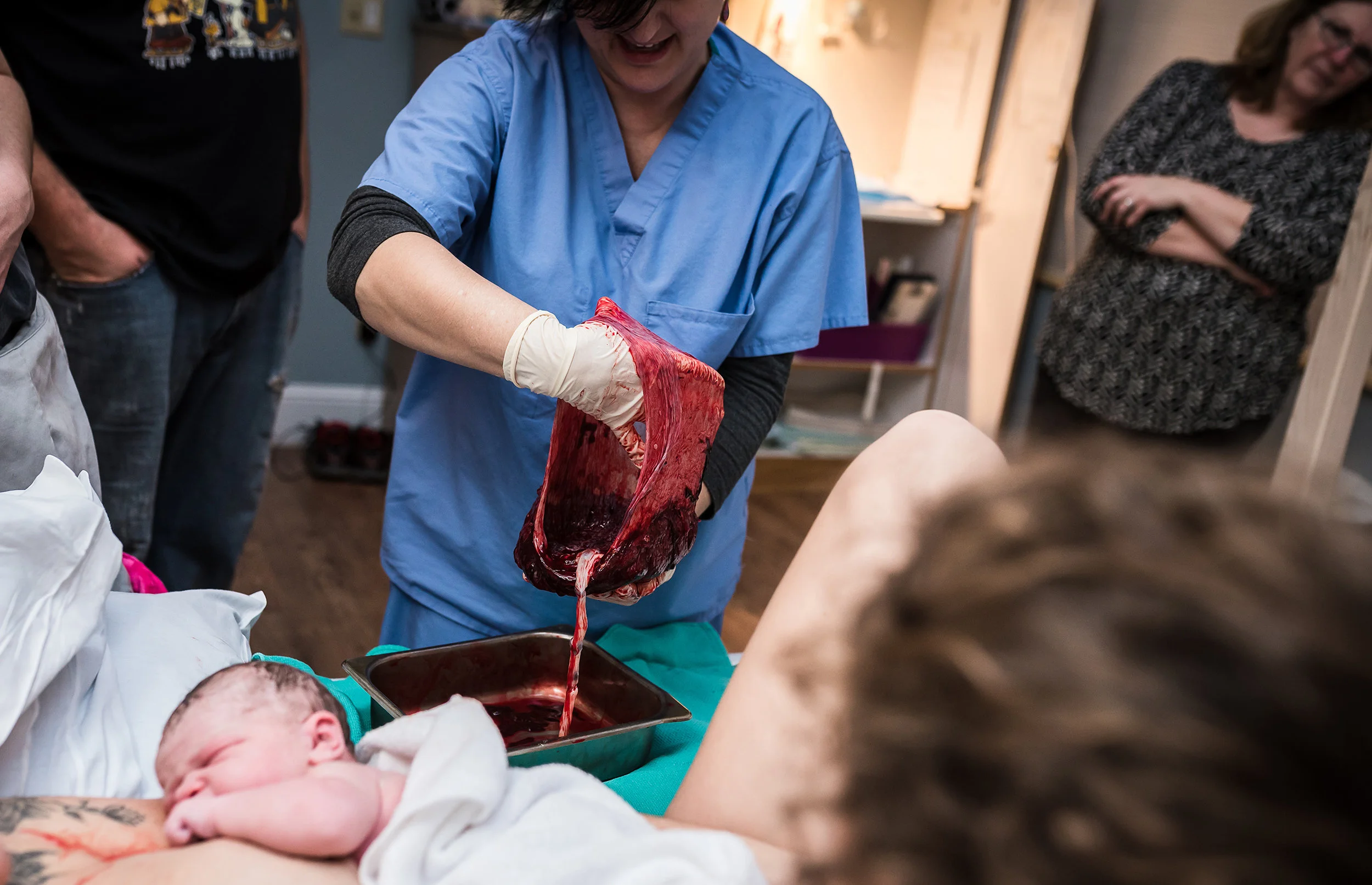FACTS: Placentas
Wait, you take pictures of placentas?!
Yes, yes we do. Why? because placentas are pretty interesting and most people don’t get a lot of opportunities in life to see an entire organ that comes out of your body! Obviously there is some blood involved so sometimes it’s not for everyone but even those who are nervous or unsure about seeing it but we always take the opportunity when possible to grab a shot or two just in case they change their minds afterwards. It may be surprising but every one of our clients who had been hesitant before wanted to see a picture afterward if we had the photos.
LET’S LEARN ABOUT PLACENTAS:
1. The placenta is a multi functioning organ. It provides oxygen, nutrition, and fluids to the baby. The placenta filters out waste like kidneys and acts as your baby's lungs.
2. The placenta provides immunity and antibodies. Even long after the baby is born the antibodies can provide protection 3 to 6 months following birth.
3. The placenta functions without direct control from the nervous system. The placenta has no nerve cells, which means that your placenta works and functions without being connected to your brain. Isn’t that crazy! SCIENCE!
4. The placenta is the only disposable organ. True, we can live and function without certain organs but the placenta is the only organ that is designed to naturally be disposed of. It is also unique that we just keep growing them over and over again, disposing of them with each pregnancy.
5. Identical twins may or may not share a placenta. Sharing the placenta depends of whether or not the egg splits before the placenta develops or after. Fraternal twins will always have two placentas.
6. When the placenta exits your body it helps kick-start the milk making. When your placenta separates from the uterus it triggers the hormone called Prolactin which is the hormone responsible for milk making.
7. Mother's and baby's blood passes through the placenta but never mix. If mixed it could create a ton of problems including the mother's blood creating antibodies to attack the baby's blood destroying the pregnancy.
8. Women can choose to do many things with their placenta. There is the growing trend of placenta encapsulation here in the States but there are also other things women have the option of looking into. You can bury and plant a bush or tree with your placenta, or even make your placenta a piece of art with a placenta print, or make it into jewelry!
9. The placenta can be used to better understand and research cancer. The placenta is able to develop in a woman's body without being attacked by the immune system. Scientists can study the similarities between tumors and the way pregnancy and placentas develop.
10. The placenta is 50% from mom and 50% from dad. Even though the placenta grows inside the woman the placenta starts to form once the sperm fertilizes the egg and a blastocyst is formed. This becomes the placenta and baby.













